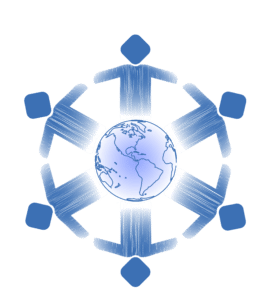The focus and impact of ATHP research over the last two decades.
This eight-part blog series explores the rich body of research that has been generated by the Addiction Training for Health Professionals (ATHP) program over the last 18 years under the leadership and guidance of Dr. Erica Frank. ATHP is a program at the Frank Foundation that primarily focuses on facilitating positive health outcomes by building capacity in addiction medicine for healthcare professionals and preventing disease globally. This is done through the development of training and education, initiatives and interventions, and research and policy. Some significant highlights of the research include the work done to improve the education of physicians in addiction by providing free online training, reducing the number of those affected by substance use disorders through health promotion and lifestyle medicine, and the Healthy Doc = Healthy Patient initiative. The work of the ATHP is informed by this research, and the integration of its findings guides the progression of our efforts over time. The research generated by the program for the last eighteen years has been categorized into six interconnected sub-groupings, all of which promote and advocate a better understanding of addiction, aim to strengthen preventive and clinical care in substance use disorders, as well as support the development and implementation of interventions and policies to address these. They include:
- Online Education and Addiction
- Medical Students and Addiction
- Residents and Addiction
- Physicians and Addiction
- International Health Workers and Addiction
- Health, Policy, Environment, and Addiction

The work done by the ATHP for almost two decades has responded to some of the world’s biggest challenges and supported the actualization of global initiatives that seek to do the same. This includes the World Health Organization’s (WHO) call for innovative ways of solving healthcare worker shortage, the call to tackle the global disease burden and substance use disorders, and global initiatives such as the United Nations (UN) 2030 Sustainable Development Goals (SDGs), geared towards improving the standard of living for all populations. In this blog series, we highlight this work (the discoveries made, lessons learned, and the impact the research has had) and briefly explore the way forward for the ATHP for the next decade.
Our Online Education and Addiction research charts the progression, success, and impact of web-based training and global online training models in health science education. It explores learning portals such as NextGenU.org, among others, and the contributions these have made to the central mission of democratizing education, advancing knowledge about, and building capacity in addiction medicine. The NextGenU.org learning method of using online resources to reduce costs in education, invented in 2001, has had a significant impact on developing knowledge and skills among learners worldwide, to the extent that learners from every country and over 1,500 institutions have accessed the courses and resources. These learners have included physicians, staff from healthcare facilities, medical students, and community health workers, among others.
A major takeaway from the Online Education and Addiction research is that web-based training/education is a viable option for developing competency in addiction training. It is groundbreaking because it removes cost while creating equity and access and is an innovative and feasible solution for tackling some of the world’s biggest problems, including the disease burden, substance use disorders, and healthcare worker shortage, to name a few. This approach is well suited to create positive global outcomes and it aligns well with the UN’s SDGs 3 and 4, which seek to “ensure healthy lives and promote well-being for all at all ages”, and “ensure inclusive and equitable quality education and promote lifelong learning opportunities for all” respectively (United Nations). Of significant interest here, is target 3.5 of SDG 3 which seeks to strengthen efforts geared toward preventing and treating substance use disorders, and this is a major focus of ATHP. Additionally, this approach contributes to numerous other sustainable development goals, including goals 1, 5, 10, 11, and 17, as outlined below:
- SDG 1: No Poverty – Education empowers people and creates opportunities so they can provide better lives for themselves.
- SDGs 5 & 10: Gender Equality & Reduced Inequality – Web-based trainings are open access, gender-responsive, and free of discrimination or preference. Consideration is given to issues surrounding equity and barriers are not perpetuated.
- SDG 11: Sustainable Cities and Communities – A major impact of open access, free or low cost, web-based training is that communities can be empowered, especially those in low- middle-income countries (LMICs) and other resource-constrained settings, and in a way that they can sustain themselves.
- SDG 17: Partnerships to achieve the Goal

The research in this area has shown that web-based training efforts transform health science education, fill a gap that traditional education models cannot, and are a quick and efficient way to build capacity among healthcare professionals and aspiring ones, as well as transform communities in a way that enables them to sustain themselves. This is a fundamental impact of the delivery of these models in LMICs and low-resource settings. Overall, the advancements made in health science education through online training (accessibility and affordability for low-resource settings, increasing substance use disorder–related knowledge and skills, decreasing substance use-related stigma, etc.) all serve as impactful efforts toward positive global health outcomes.
The section on Medical Students and Addiction tested the Healthy Doc = Healthy Patient theory through various studies involving several medical schools in the United States and Colombia, tracking the history of medical students’ attitudes about health and their subsequent counseling behaviors.
These studies included data from surveys of students in 17 medical schools and showed a strong correlation between teaching healthy behaviors to medical students and them becoming better counselors and more avid preventionists. The research also highlighted a series of programs built into and around the medical curriculum at Emory University School of Medicine in Atlanta, Georgia. The project was designed to improve prevention counseling by improving the personal health practices of medical students.
The research revealed that the patient counseling practices with which medical students graduate provide the foundation of their counseling practices as physicians. Accordingly, by encouraging medical students to be healthy, we could help create healthy physicians who are more likely to counsel their patients about healthy behaviors.
This milestone research, sponsored in part by ATHP, was the first to test and demonstrate the correlation between medical students’ personal health habits and counseling practices. It proved that the promotion of healthy behavior by medical schools could affect the counseling practices of physicians in training.
The research conducted in the Resident and Addiction sub-category further develops and expands the discourse on the Healthy Doc = Healthy Patient initiative through the identification of a correlation between residents’ positive health habits and those of their patients. This is a major highlight of this section as it speaks to the influence and impact residents can have in developing healthier lifestyle habits among their patients and, by extension, populations, and demonstrates that there is value in helping residents to adopt healthier lifestyle habits for themselves in this regard. Residents who exemplify the health values they promote are more likely to have a more significant impact and influence on their patients and communities. Additionally, the research advocates for health-promoting interventions that target residents, highlighting the efficiency and impact these have had. The research also establishes the importance of equipping residents with the necessary skills and knowledge through training in preventive counseling and Lifestyle Medicine to improve clinical efforts. This is fundamental in shaping good habits during residency (positive health habits, health promotion during clinical practice, etc.) and integral to creating positive global health outcomes.

An important discovery of the research on Residents and Addiction is the identification of the factors that prohibit preventive counseling among residents. This includes stigma-related attitudes to substance use patients, residents’ understanding of their role in health promotion, residents’ perceptions of the relevance of preventive counseling, and a lack of confidence due to limited knowledge and training in the area. The research demonstrates the importance of Lifestyle Medicine training and preventive counseling in addressing these factors and enabling healthier behaviors globally. It is believed that honing these skills and improving these habits during residency is fundamental to creating long-term positive clinical practices, of which health promotion is an effective and valuable strategy.
With respect to Physicians and Addiction, Dr. Erica Frank has globally led the study and promotion of the relationship between physicians’ personal and clinical prevention habits, publishing over 100 physician health articles. She has participated in multiple national studies in the United States, Canada, Germany, Colombia, and Israel. ATHP research demonstrates that in addition to the benefits for patients, healthy lifestyle practices for doctors may be essential to prevent job-related stress and impairment in doctors.
The research has also shown that while physicians are generally considered in better physical condition than the rest of the population, work-related stress and burnout among physicians exist at higher rates than in other parts of the population. Physicians will benefit from interventions that help them adopt healthier lifestyles –not only for their personal health but for the health of their entire patient population, which is likely to profit from more efficient and effective health promotion counseling.
The International Health Workers and Addiction section explores substance use among health workers in Kenya and assesses self-efficacy among primary care workers regarding care, screening, and counseling for persons with SUDs. The research in this section serves an important role in bridging the gap in the literature that explores substance use in health workers, by highlighting the trends in LMICs. The research highlights that tobacco and alcohol (ranked globally as the 2nd and 5th most important risk factors respectively) are the most commonly used substances in the region, and male health workers are more commonly indulgent “with the exception of hallucinogens for lifetime use and sedatives for past three months’ use” (Mokaya et al., 2016, p.316). Additionally, a key research finding is that substance use rates are higher in health workers in Kenya than in the general population, making this a critical issue. Given the role health workers play in influencing positive health behaviors among patients, interventions are needed to address this. However, further exploration of the topic is also necessary to uncover more about substance use trends in health workers in the region and other LMICs.
Another key discovery in the research on International Health Workers and Addiction speaks to factors that drive confidence and self-efficacy among health workers as it relates to providing care for and counseling patients with substance use disorders. These include support services related to substance use in health facilities and exposure to training in this substance use. The research also shows that there is lower self-efficacy among primary care workers (PCWs) operating in public facilities versus those practicing in private facilities, due largely an “internal brain drain” and the disparities that exist between public and private healthcare. It was determined that self-efficacy can be improved in primary care workers and other healthcare professionals by building capacity and creating greater awareness of their roles in counseling patients about substance use, as well as developing and implementing training support at the institutional level.
The Health Policy, Environment, and Addiction research draws attention to the significant burden of NCDs on population health which has resulted in high treatment costs and imposed a direct economic burden on health systems, households, and society, as a whole.
The research examines changing social and economic factors such as more people moving to cities and the spread of unhealthy lifestyles, which have fueled the NCD crisis. Pollution, such as noise, water, and soil contamination, and a lack of space for physical activities, combine to make cities epicenters of chronic diseases.

Therefore, policies targeting the physical and social environment where people live, work, and play such as reducing car dependency and traffic congestion, improving mobility and accessibility, and deterring tobacco use can positively affect healthy living.
The concepts of Healthy Cities and Cittaslow have gained new attention and significant prominence in the context of health promotion agendas. At the same time, there has been an increase in the examination of policy initiatives related to substance use disorders and the overdose epidemic, as there has been an increasing trend in favor of legalizing cannabis in the United States.
ATHP’s research over the last two decades has been pivotal in our understanding and advancement of addiction medicine. We believe that this work is integral in helping to determine useful and effective strategies for handling global issues related to NCDs and SUDs, as well as other pressing matters. In our next blog, we zone in on the work done in the Online Education and Addiction section, and highlight findings and major takeaways from the research in this area. Stay tuned!
References
Mokaya, A. G., Mutiso, V., Musau, A., Tele, A., Kombe, Y., Ng’ang’a, Z., Frank, E., Ndetei, D., Clair, V. (2016). Substance use among a sample of healthcare workers in Kenya: a cross-sectional study. Journal of Psychoactive Drugs, 48(4), 310-319.
United Nations. (n.d.). Do you know all 17 SDGs? https://sdgs.un.org/goals
Aduke Williams and Sherry Joseph
Authors

